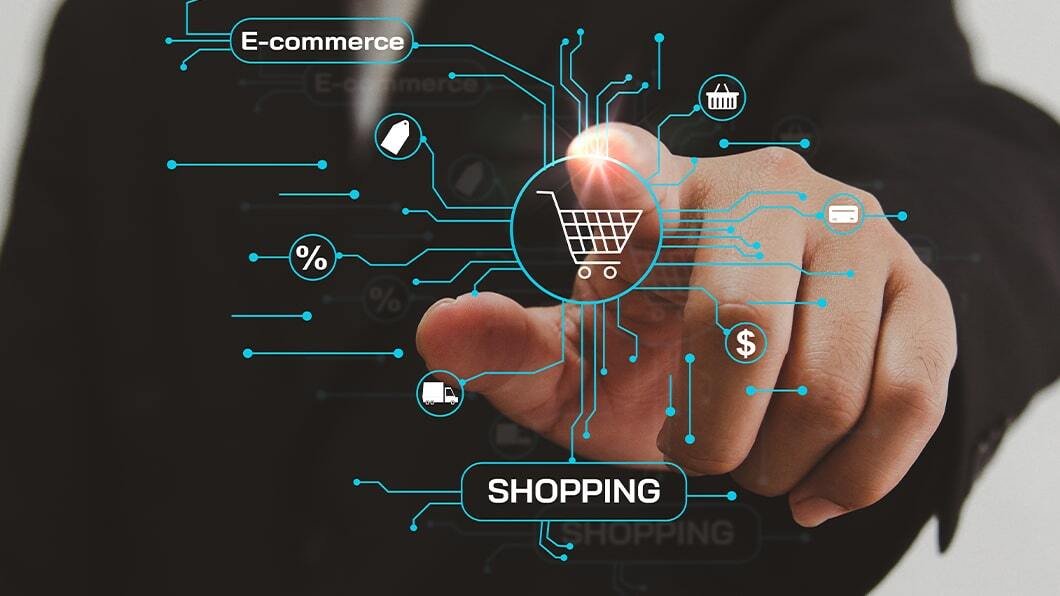
E-commerce Innovations and Future of Online Shopping
In the digital age, e-commerce has revolutionized the way we shop, making it more convenient and accessible than ever before. With the continuous advancements in technology and changing consumer preferences, the landscape of online shopping is constantly evolving. This article explores the innovative trends in e-commerce and provides insights into the future of online shopping.
Introduction
E-commerce has witnessed remarkable growth over the years, and it continues to reshape the retail industry. With the proliferation of smartphones, improved internet connectivity, and changing consumer behavior, online shopping has become an integral part of our lives. However, the e-commerce landscape is not static; it is driven by innovation and constantly adapts to meet consumer demands.
Rise of Mobile Commerce
Mobile commerce, or m-commerce, has become a dominant force in the e-commerce industry. With the widespread use of smartphones and tablets, consumers are increasingly turning to mobile devices for their shopping needs. E-commerce platforms and retailers have responded by optimizing their websites and developing mobile apps that offer a seamless and user-friendly shopping experience.
Personalization and Customization
In an era of information overload, personalization has become crucial for e-commerce success. Retailers are leveraging data analytics and machine learning algorithms to gather insights about their customers’ preferences, purchase history, and behavior. This allows them to offer personalized product recommendations, tailored promotions, and customized shopping experiences that resonate with individual consumers.
Augmented Reality (AR) and Virtual Reality (VR)

Augmented reality and virtual reality technologies are transforming the way consumers shop online. AR enables customers to visualize products in their physical environment before making a purchase. For example, they can try on virtual clothing or place virtual furniture in their living rooms. VR, on the other hand, creates immersive shopping experiences, allowing users to explore virtual stores and interact with products as if they were in a physical retail environment.
Voice Commerce and Smart Assistants
Voice commerce is gaining traction with the rise of smart speakers and virtual assistants like Amazon’s Alexa, Google Assistant, and Apple’s Siri. Consumers can now use voice commands to search for products, place orders, and receive personalized recommendations. As voice recognition technology improves and smart assistants become more integrated with e-commerce platforms, voice commerce is expected to play a significant role in the future of online shopping.
Drone Delivery and Automation
The delivery process is a critical aspect of e-commerce, and advancements in technology are reshaping the logistics landscape. Drone delivery is one such innovation that has the potential to revolutionize last-mile delivery. Drones can navigate through traffic and deliver packages to customers’ doorsteps quickly and efficiently. Additionally, automation technologies, such as robotic fulfillment centers and self-driving delivery vehicles, are being explored to streamline the e-commerce supply chain further.
Blockchain and Cryptocurrency
Blockchain technology offers opportunities to enhance security, transparency, and trust in e-commerce transactions. It can be used to verify product authenticity, prevent counterfeit goods, and provide transparent supply chain information. Furthermore, the emergence of cryptocurrencies has the potential to simplify international transactions and eliminate the need for traditional banking systems, making cross-border e-commerce more accessible and efficient.
Social Commerce

Social media platforms have evolved beyond communication tools and now serve as powerful marketing and sales channels. Social commerce combines the social aspects of platforms like Facebook, Instagram, and Pinterest with e-commerce functionalities. Consumers can discover products, read reviews, and make purchases without leaving the social media environment. This integration of social media and online shopping creates a seamless and engaging shopping experience for users.
Subscription-Based Services
Subscription-based models have gained popularity in the e-commerce industry. From curated product boxes to streaming services, consumers are increasingly subscribing to receive regular shipments or access to exclusive content. These models offer convenience, personalization, and the element of surprise, making them attractive to consumers who value convenience and enjoy discovering new products.
The Future of Online Shopping
The future of online shopping is expected to be shaped by several key trends and advancements:
- Hyper-personalization: Retailers will leverage AI and machine learning algorithms to deliver even more personalized shopping experiences, tailoring product recommendations and promotions to individual preferences.
- Seamless omnichannel experiences: The boundaries between online and offline shopping will continue to blur as retailers strive to provide seamless experiences across various channels. Customers will enjoy consistent experiences whether they shop online, in-store, or through mobile devices.
- Sustainable and ethical practices: Consumers are increasingly conscious of the environmental and social impact of their purchases. E-commerce platforms will need to adopt sustainable practices, offer eco-friendly products, and transparently communicate their ethical standards to gain consumer trust.
- Enhanced security and privacy: As cyber threats continue to evolve, e-commerce platforms will invest in advanced security measures to protect customer data and provide a secure shopping environment. Privacy regulations will also play a crucial role in shaping the future of online shopping.
- Integration of AI and chatbots: AI-powered chatbots will become more sophisticated, offering instant customer support, personalized recommendations, and even virtual shopping assistants that can understand and fulfill customer needs.
Conclusion

E-commerce has come a long way, and it continues to evolve at a rapid pace. The innovative trends in mobile commerce, personalization, AR/VR, voice commerce, drone delivery, blockchain, social commerce, subscription-based services, and more are reshaping the future of online shopping. As technology advances and consumer expectations evolve, e-commerce platforms and retailers will need to adapt and embrace these innovations to stay competitive and provide exceptional shopping experiences.
FAQs (Frequently Asked Questions)
1. Are online transactions secure?
Yes, online transactions are generally secure. E-commerce platforms employ encryption and secure payment gateways to protect customer data during transactions. However, it’s important for consumers to practice good cybersecurity habits, such as using strong passwords, regularly updating software, and avoiding suspicious websites or links.
2. Can I return products purchased online?
Most e-commerce platforms have return policies that allow customers to return products within a specified timeframe. However, the exact return policy may vary between retailers, so it’s important to review the terms and conditions before making a purchase.
3. How can I ensure the quality of products purchased online?
Reading product reviews and ratings from other customers can provide insights into the quality of products. Additionally, reputable e-commerce platforms often have buyer protection programs in place to address issues related to counterfeit or misrepresented products.
4. What are the advantages of online shopping over traditional retail?
Online shopping offers convenience, a wide selection of products, competitive pricing, and the ability to shop from anywhere at any time. It also eliminates the need to physically visit stores, saving time and transportation costs.
5. Will physical retail stores become obsolete in the future?
While e-commerce continues to grow, physical retail stores are unlikely to become obsolete. However, they will need to adapt and provide unique in-store experiences, such as personalized assistance, immersive displays, or exclusive products, to complement the convenience of online shopping and attract customers. The future of retail lies in creating a seamless integration between online and offline channels, allowing customers to have a unified shopping experience.














